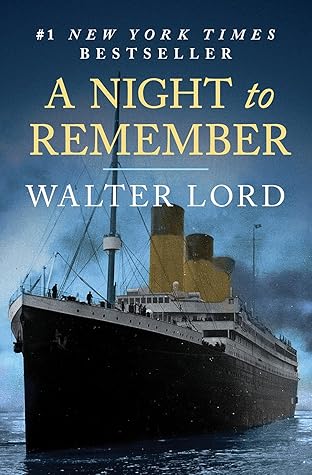More on this book
Community
Kindle Notes & Highlights
The writing room had originally been planned partly as a place where the ladies could retire after dinner. But this was the twentieth century, and the ladies just wouldn’t retire. Clearly, a smaller room would do.
It was a mathematical certainty, pure and simple. There was no way out.
The clock in the wireless shack said 12:45 A.M. when the Titanic sent the first SOS call in history.
vanished that April night. Even more than the largest liner in the world, her cargo, and the lives of 1,502 people. Never again would men fling a ship into an ice field, heedless of warnings, putting their whole trust in a few thousand tons of steel and rivets. From then on Atlantic liners took ice messages seriously, steered clear, or slowed down. Nobody believed in the “unsinkable ship.”
Not to mention the children. Except for Lorraine Allison, all 29 First and Second Class children were saved, but only 23 out of 76 steerage children.
Neither the chance to be chivalrous nor the fruits of chivalry seemed to go with a Third Class passage.
If the White Star Line was indifferent, so was everybody else. No one seemed to care about Third Class—neither the press, the official Inquiries, nor even the Third Class passengers themselves.
The night was a magnificent confirmation of “women and children first,” yet somehow the loss rate was higher for Third Class children than First Class men.
The Titanic somehow lowered the curtain on this way of living. It never was the same again. First the war, then the income tax, made sure of that.
During the agonizing days of uncertainty in New York, the Astors, the Guggenheims and others like them were not content to sit by their phones or to send friends and retainers to the White Star Line offices. They went themselves. Not because it was the best way to get information, but because they felt they ought to be there in person.
If wealth meant so little on this cold April night, did it mean so much the rest of the year?
Lowe had miscalculated how long it took to row to the scene … how long to locate a voice in the dark … most of all, how long a man could live in water 28 degrees. There was, he learned, no need to wait until the crowd “thinned out.” But at least Lowe went back.
In boat after boat the story was the same: a timid suggestion, a stronger refusal, nothing done. Of 1,600 people who went down on the Titanic, only 13 were picked up by the 18 boats that hovered nearby.
In No. 3, Elizabeth Shutes watched the shooting stars and thought to herself how insignificant the Titanic’s rockets must have looked, competing against nature.
But legends are part of great events, and if they help keep alive the memory of gallant self-sacrifice, they serve their purpose.
What troubled people especially was not just the tragedy—or even its needlessness—but the element of fate in it all. If the Titanic had heeded any of the six ice messages on Sunday … if ice conditions had been normal … if the night had been rough or moonlit … if she had seen the berg 15 seconds sooner—or 15 seconds later … if she had hit the ice any other way … if her watertight bulkheads had been one deck higher … if she had carried enough boats … if the Californian had only come. Had any one of these “ifs” turned out right, every life might have been saved. But they all went against her—a
...more
It is a rash man indeed who would set himself up as final arbiter on all that happened the incredible night the Titanic went down.


